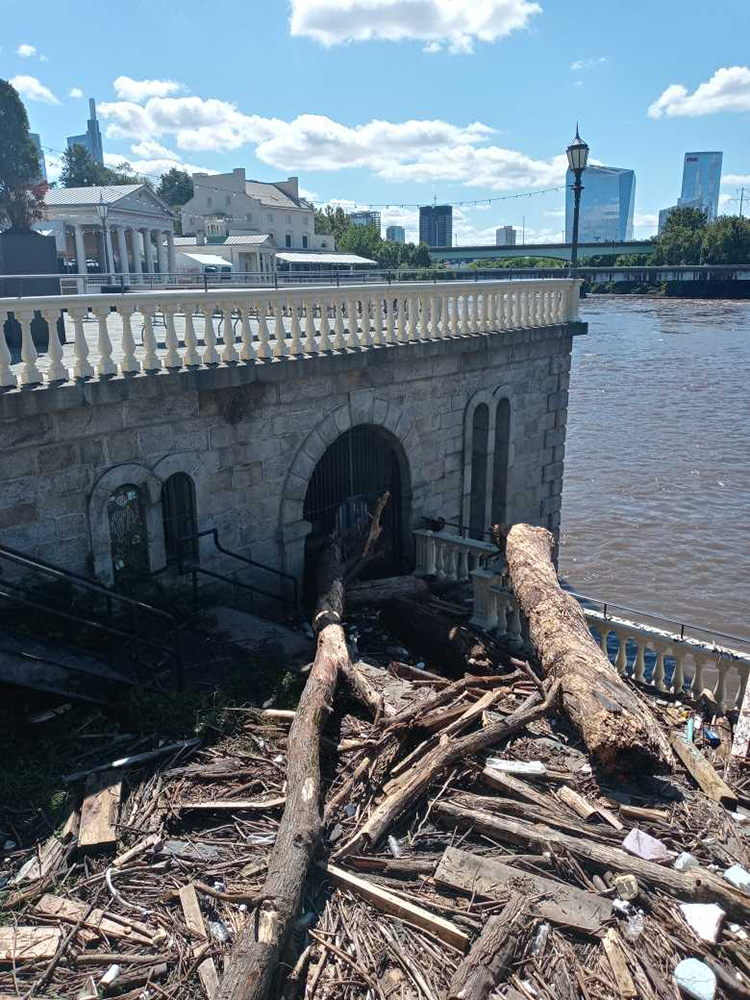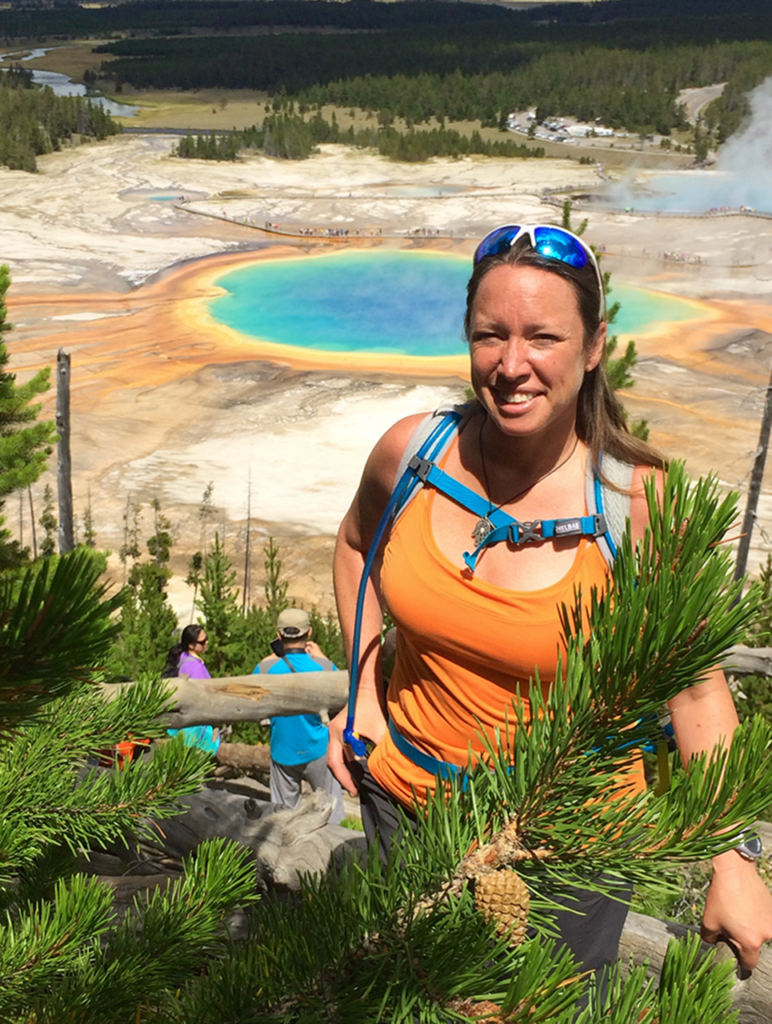The Schuylkill river, swollen with runoff from Hurricane Ida, was rising fast.
Karen Young, the executive director of the Fairmount Water Works, knew it was only a matter of time until the river’s chocolate-brown water flooded the Interpretive Center, the water-focused museum next to the Fairmount Dam.
“I was in the center the day the flood event occurred,” Young says. “It was a crazy weather day. It was raining and there were tornado watches. I’m probably like most Philadelphians these days, and I’ve got all kinds of apps on my phone to alert me.”
Young knew she and the other staff had to clear out electronic equipment and at-risk exhibit materials before the floodwaters hit.
That would have been a heavy lift any day of the week, but on the evening of September 1 the center was kicking off POOL (Grid #153, February 2022), a major exhibition, with a VIP event.
“After five years of hard work pulling together an exhibit about segregation and public spaces, pools, we had people flying in, bussing in. We expected over 200 people for the event that evening,” Young says.
Water Works staff did what they could to contact attendees before they arrived at the soon-to-be-flooded museum.
“We knew that we couldn’t reach everyone, so we were there,” Young says. Sixty people showed up. After some rushed toasts, they did their best to gobble up the catered food. Luckily the exhibit assembly team was still on site, and they quickly dismantled what they had just set up.
Along with exhibits about Philadelphia’s water history and a video feed from the Fairmount Dam Fishway, the Water Works also hosts a freshwater mussel hatchery, showcasing efforts to restore the native molluscs to our waterways.
I spent three months after the storm at the Water Works in the mud, disinfecting everything I could… ”
— Lance Butler, senior scientist at the Philadelphia Water Department
“When the storm hit I was there moving equipment out,” said Lance Butler, senior scientist in the Office of Watersheds for the Philadelphia Water Department. “Luckily we saved 70% of the equipment and supplies.”
Luckily (or unluckily) this was not the facility’s first flood. When the museum opened in 2003 it expected a damaging flood every 100 years.
“If that was the case I’d be 500 years old,” Young says. “It’s happened five times.”
By 2021 the exhibits inside were designed either to withstand immersion in water or to be quickly removed. There was no drywall or carpet to be ruined by river water.
The Water Works became a museum relatively late in life.
It started off in 1815 as the pumping plant for the city’s drinking water, its iron machinery housed in a complex of neoclassical buildings looking over the Fairmount Dam. It filled a reservoir where the Philadelphia Museum of Art now sits (on the “Fair Mount”).
When it opened it was considered an engineering marvel, attracting visitors from around the world. It closed in 1909, but reopened in 1911 as the Philadelphia Aquarium, which operated until 1962, replaced by a swimming pool, which lasted for 10 years.
The structure itself was built to last. After each flood, the Water Works staff has cleaned up, and then reinstalled exhibits and electronic equipment. Still, Ida was something different.
The force of the water burst through doors, Young says.
“I don’t just mean wooden doors,” she explains. “The metal grates we use to keep debris out were sheared off. Of eight windows, seven were blown out. Six inches of muck was caked everywhere, and that we’d never seen anywhere in that amount.”

Water rising to the ceilings destroyed the sprinkler system as well as the elevator.
“A lot of non-movable objects got destroyed,” Butler says. “I spent three months after the storm at the Water Works in the mud, disinfecting everything I could, and storing everything in the biosolids recycling facility.”
Young recognizes that this won’t be the museum’s last major flood. As global warming makes storms more intense, Ida-strength events will be more common.
“We’re going to change how we operate and look at more resilient materials to keep the people and the building safe and dry,” Young says.
The Water Works is opening each section only after renovations to make it more flood-resilient are complete. The POOL exhibit relaunched in March, with the mussel hatchery and an additional exhibit space slated to open in April.
“We have no intention of abandoning the building,” Young says. “I think when people come back and see what we have been able to accomplish, we’ll have a new group of advocates and stewards. I’m encouraged that we can share what we’re learning about what works and doesn’t work.”









